List of plant genus names (D–K)
Since the first printing of Carl Linnaeus's Species Plantarum in 1753, plant species have been assigned one epithet (name) for the species and one for their genus (a grouping of related species).[1] Many of these genera (genuses) are listed in Stearn's Dictionary of Plant Names for Gardeners. William Stearn (1911–2001) was one of the pre-eminent British botanists of the 20th century: a Librarian of the Royal Horticultural Society, a president of the Linnean Society and the original drafter of the International Code of Nomenclature for Cultivated Plants.[2][3]
The first column below lists vascular plant genera from Stearn's Dictionary, excluding those names that no longer appear in more modern works, such as Plants of the World by Maarten J. M. Christenhusz (lead author), Michael F. Fay and Mark W. Chase.[4] Plants of the World is also used for the family and order classification for each genus. The second column gives either a meaning or the derivation of the word, such as a namesake or a language of origin. The last two columns indicate citations to The A to Z of Plant Names by Allen Coombes and The Names of Plants by David Gledhill.[5][6] The four-volume CRC World Dictionary of Plant Names by Umberto Quattrocchi is also a source for almost every genus in the table, except as noted.
Key
- Latin: = derived from Latin (otherwise Greek, except as noted)
- C = listed in Coombes's The A to Z of Plant Names
- G = listed in Gledhill's The Names of Plants
Genera


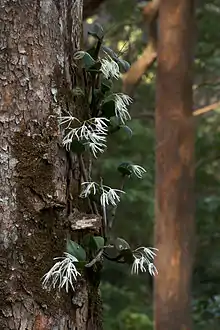
.jpg.webp)

.jpg.webp)
.JPG.webp)
.jpg.webp)




_-_cropped.jpg.webp)

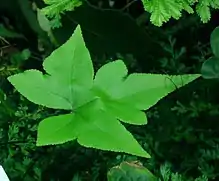
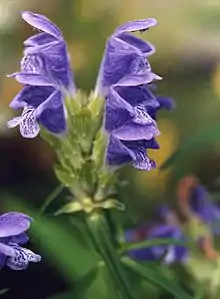
.jpg.webp)



_04.jpg.webp)
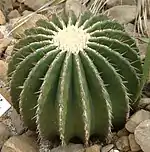



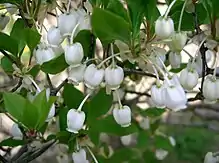
.jpg.webp)



_L._-_Flickr_-_Alex_Popovkin%252C_Bahia%252C_Brazil_(5).jpg.webp)
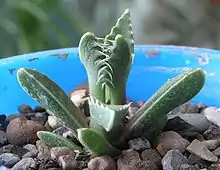
.jpg.webp)
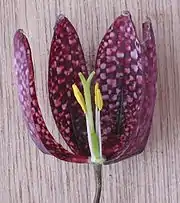
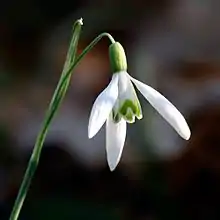






.JPG.webp)

.jpg.webp)



.jpg.webp)
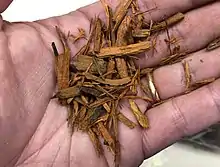



.jpg.webp)

.jpg.webp)


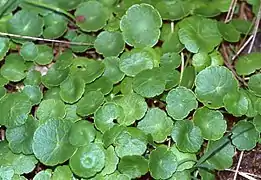

.jpg.webp)

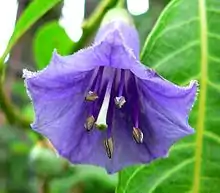

.jpg.webp)

.jpg.webp)
.jpg.webp)

See also
Notes
- Clicking on ← moves you to the table row for the given genus.
- Page numbers for references are omitted, since all the references list genera alphabetically except for Plants of the World, which is mainly cited for genera that match their family names.
- "(Language) name" means the name of some plant originally, not necessarily in this genus.
- Here and following, the Greek echinos is sometimes translated "sea urchin".
- Not listed in Quattrocchi
Citations
- Cullen, p. 38.
- The Linnean Society.
- Stearn, p. ix, x.
- Christenhusz.
- Coombes.
- Gledhill.
- Stearn.
- Quattrocchi.
References
- Christenhusz, Maarten (2017). Plants of the World: An Illustrated Encyclopedia of Vascular Plants. Chicago, Illinois: Kew Publishing and The University of Chicago Press. ISBN 978-0-226-52292-0.
- Coombes, Allen (2012). The A to Z of Plant Names: A Quick Reference Guide to 4000 Garden Plants. Portland, Oregon: Timber Press. ISBN 978-1-60469-196-2.
- Cullen, Katherine E. (2006). Biology: The People Behind the Science. New York, New York: Infobase Publishing. ISBN 978-0-8160-7221-7.
- Gledhill, David (2008). The Names of Plants. New York, New York: Cambridge University Press. ISBN 978-0-521-86645-3.
- The Linnean Society (August 1992). "Publications by William T. Stearn on bibliographical, botanical and horticultural subjects, 1977–1991; a chronological list". Botanical Journal of the Linnean Society. 109 (4): 443–451. doi:10.1111/j.1095-8339.1992.tb01443.x. ISSN 0024-4074.
- Quattrocchi, Umberto (2000). CRC World Dictionary of Plant Names, Volume II, D–L. Boca Raton, Florida: CRC Press. ISBN 978-0-8493-2676-9.
- Stearn, William (2002). Stearn's Dictionary of Plant Names for Gardeners. London: Cassell. ISBN 978-0-304-36469-5.
Further reading
- Brown, Roland (1956). Composition of Scientific Words. Washington, DC: Smithsonian Institution Press. ISBN 978-1-56098-848-9.
- Lewis, Charlton (1891). An Elementary Latin Dictionary. Oxford: Oxford University Press. ISBN 978-0-19-910205-1. Available online at the Perseus Digital Library.
- Liddell, Henry George; Scott, Robert (2013) [1888/1889]. An Intermediate Greek–English Lexicon. Mansfield Centre, Connecticut: Martino Fine Books. ISBN 978-1-61427-397-4. Available online at the Perseus Digital Library.